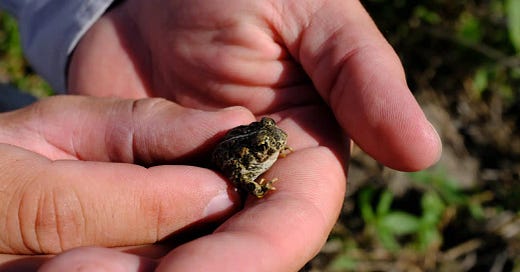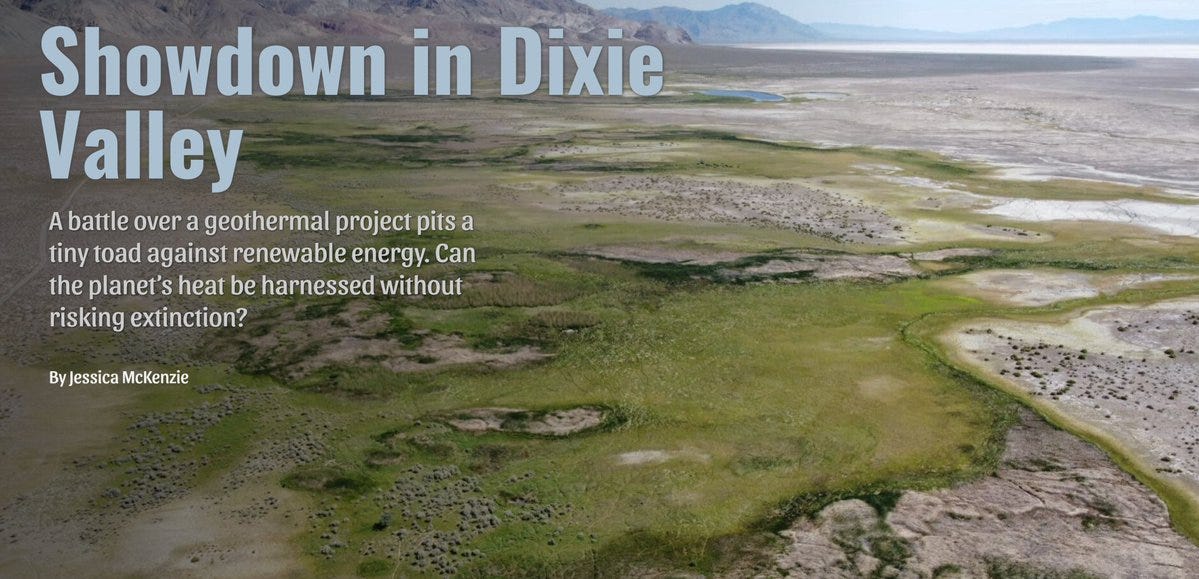The tiny toad taking on a geothermal giant
Could this renewable energy project really pose an existential threat to the Dixie Valley toad?
I don’t usually send emails this close together, but earlier this week my latest feature for the Bulletin of the Atomic Scientists was published:
It is the story of the Dixie Valley toad, the first new species of toad to be discovered in the United States in 50 years. The Dixie Valley toad is the smallest…
Keep reading with a 7-day free trial
Subscribe to Pinch of Dirt to keep reading this post and get 7 days of free access to the full post archives.



